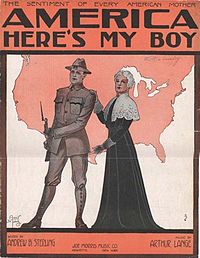 | |
| Other short titles |
|
|---|---|
| Long title | An Act to authorize the President to increase temporarily the military establishment of the United States. |
| Nicknames | Selective Draft Act of 1917 |
| Enacted by | the 65th United States Congress |
| Effective | May 18, 1917 |
| Citations | |
| Public law | Pub. L. 65–12 |
| Statutes at Large | 40 Stat. 76, Chapter 15 |
| Codification | |
| Titles amended | 50 U.S.C.: War and National Defense |
| U.S.C. sections created | 50 U.S.C. Appendix §§ 201–211, 213, 214 |
| Legislative history | |
| |


The Selective Service Act of 1917 or Selective Draft Act (Pub. L. 65–12, 40 Stat. 76, enacted May 18, 1917) authorized the United States federal government to raise a national army for service in World War I through conscription. It was envisioned in December 1916 and brought to President Woodrow Wilson's attention shortly after the break in relations with Germany in February 1917. The Act itself was drafted by then-Captain (later Brigadier General) Hugh S. Johnson after the United States entered World War I by declaring war on Germany. The Act was canceled with the end of the war on November 11, 1918. The Act was upheld as constitutional by the United States Supreme Court in 1918.[1]